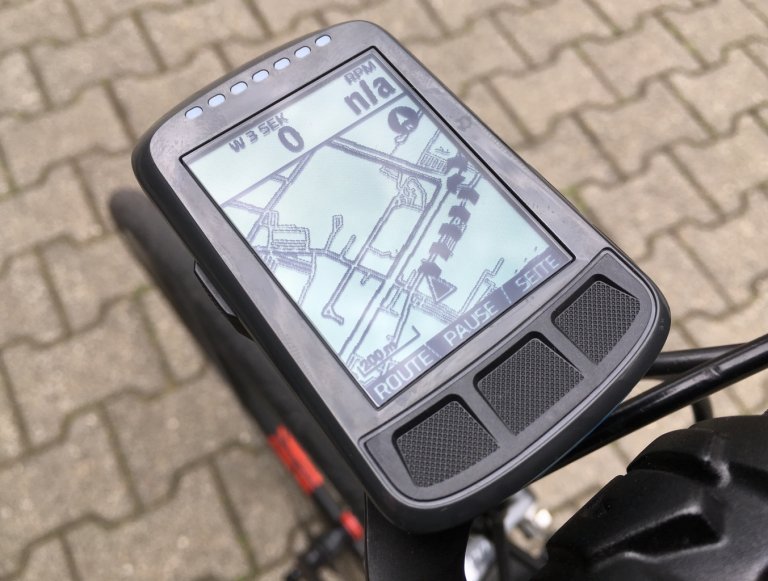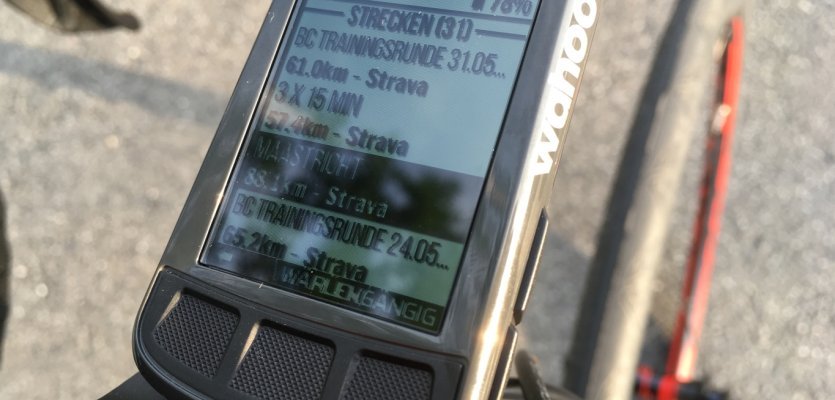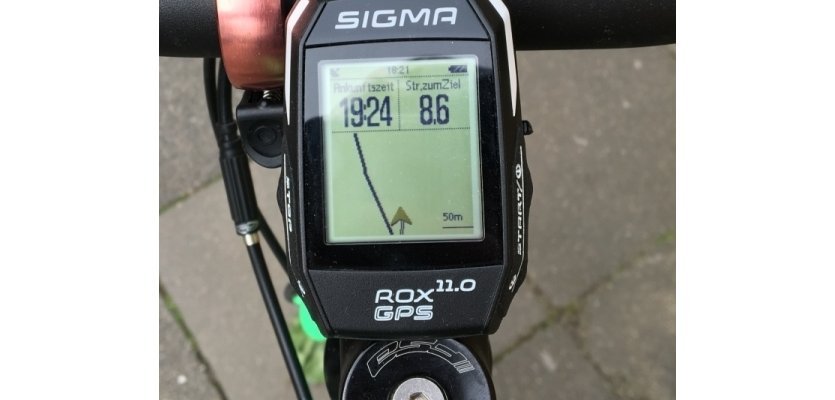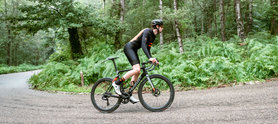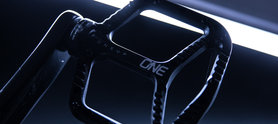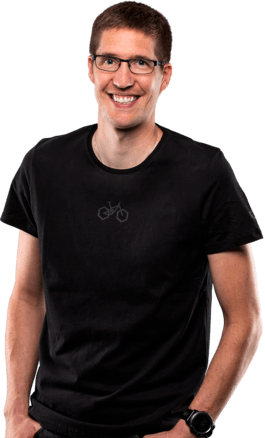Review: 5 bicycle navigation devices compared
See how different cycling navigators fare when they are sent to the same destination.
What kind of cycling computer fits you best? With this question in mind, we have selected 4 different GPS-equipped navigation devices for the bike and sent our co-workers off to Maastricht and back, about 60 kilometres round-trip. They were to use their device for navigation, but had no other guidelines to follow, nor were they to use the same type of bicycle. Afterwards, we collected their feedback.
The four devices used were the Strava app installed on an iPhone 6, the TEASI ONE3, the Wahoo ELEMNT Bolt and the Garmin 820.
David and the Garmin 820
This computer allows for instant destination entry and navigation. Of course you can also download pre-planned routes from services like Strava and Garmin Connect. Some excellent maps are pre-installed and you can even choose the type of riding (MTB, Gravel, Road) and whether you want the fastest or shortest route and other parameters before you set off.
Who is it for?
- Avid cyclists that are looking for a top-quality device to rely on in any situation
Pros
- Great usability, intuitive handling, easy address entry on the go
- Routes and riding type can be altered in many ways
- Audio navigation and re-routing
- Connectivity with peripheral devices
- Sync with Strava and Garmin Connect
Cons
- Destination cannot be selected on map
- Touchscreen is slow
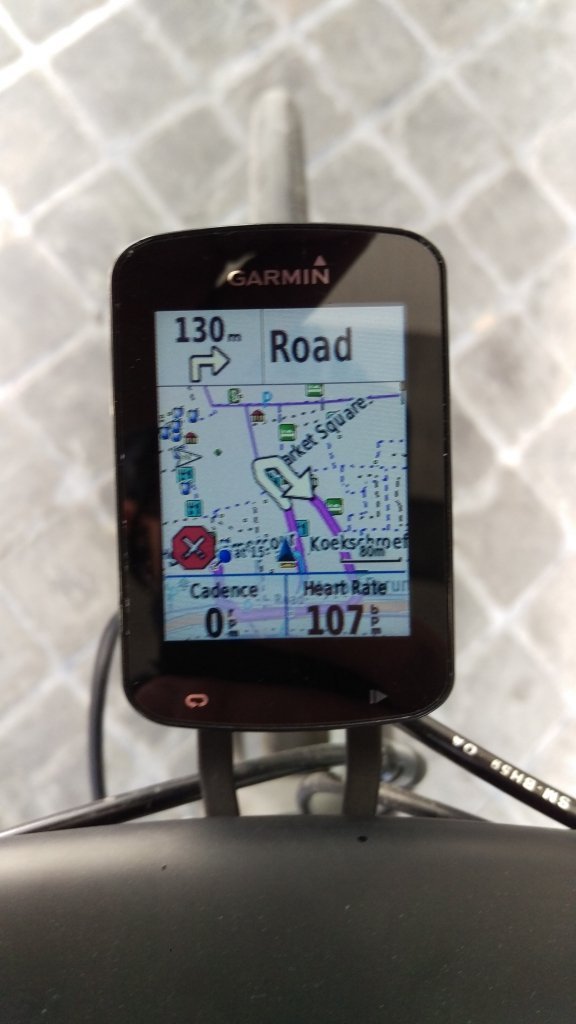
The Garmin 820
David's final verdict
I can highly recommend the Garmin 820. It does what you want it to do and it does this well: navigation. I made it to Maastricht on an alternative route and even when turning the wrong way on purpose, I was always brought back on track. The compatibility with other devices and services is another plus. The slow touchscreen leaves room for improvement, but that is about it. The Garmin 820 is my constant companion.
Sascha and Strava on iPhone 6
A bicycle GPS does not necessarily have to be a proper cycling computer. Just like for car navigation, another option is using a special app for the smart phone. In my case I chose the popular Strava tracking app and installed it on my iPhone 6. Given that you have the phone, it’s a very economical option.
Who is it for?
- Cyclists of all types that need the occasional assistance of digital maps
- Riders that don’t want to invest into a GPS-equipped cycling computer
Pros
- Easy and economical, nothing needed but a smart phone and the app
- Routes can be easily planned on your PC
- The app doubles as a tracking device, social media platform and training planner
Cons
- No turn-by-turn navigation, nor audio signals, pure map on screen
- Display has to be always on
- Drains phone battery
- Routes can’t be planned on the phone, only on PC
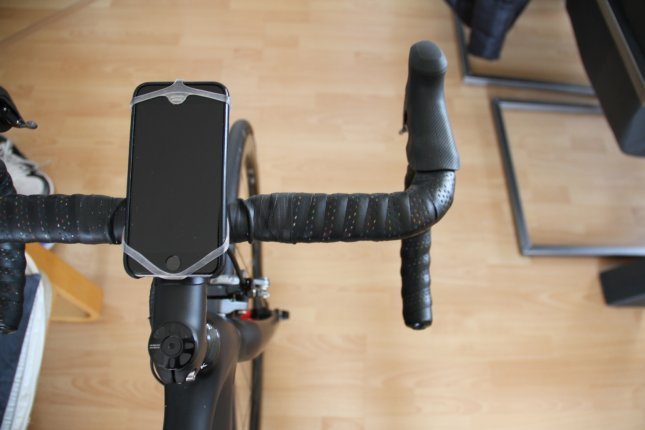
iPhone
Sascha's final verdict
The route Strava had selected was 99% ridable, apart from a stretch of 300 meters through a pedestrian zone. However, I cannot recommend this option for real-time cycling navigation. The lack of tunr-by-turn navigation indicators and following the dot on the map is impractical at best, right out dangerous at worst. To avoid taking your eyes off the road and away from traffic obliges you to stop frequently. It's a viable option if you are only looking for an electronic assistant in case your sense of direction fails you.
Drew and the TEASI ONE3
The Teasi One³ is an accessible cycling GPS at a great price. It is perfect for getting you to where you need to go, keeping you on safe cycling paths. Below, you will find more details about the Teasi One³:
Who is it for?
- City & Touring riders looking to get from point A to point B on a safe route
- Cyclists who want to record data about their training and not get lost doing it
Pros
- Address based navigation with plenty of POIs (Points of Interest)
- Turn for turn navigation
- Keeps you on cycling paths/lanes
- The screen is large and easy to read even when in the sun.
- Offers three route options
- Directs you to side streets instead of busy roads
- Reroutes without telling you to make a complete U-turn
- Battery lasted for entire 3 hour tour with 20% battery remaining
- Compatible with .gpx files
- Records data from third party devices for speed, cadence and heart rate
Cons
- Touchscreen is difficult to use
- Planning your own route is not intuitive
- Compass needs to be recalibrated after every power-up
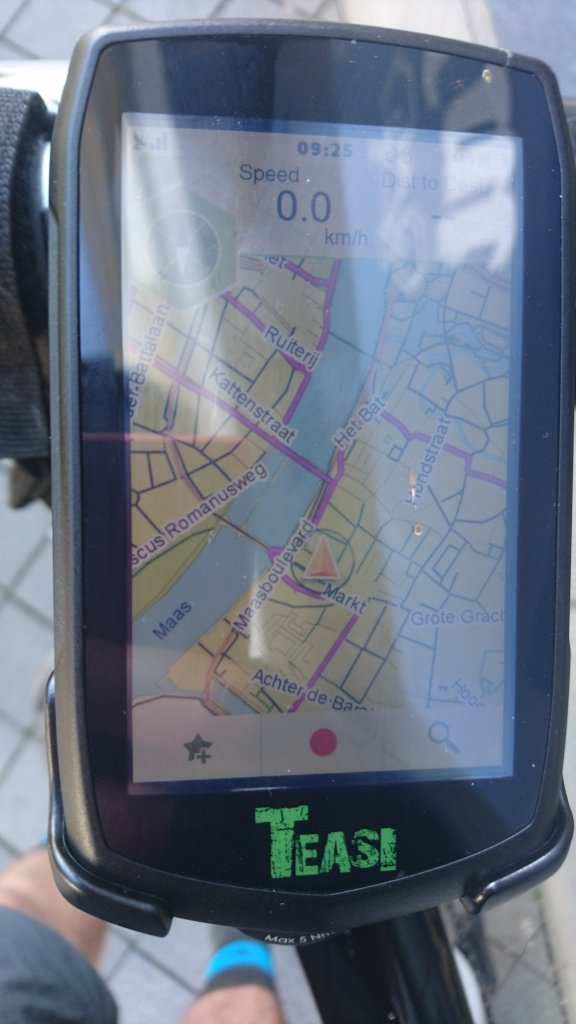
TEASI ONE3
Drew's final verdict
On my ride to Maastricht, Netherlands, everything went smoothly. I made it to the café safely and I felt like the Teasi One³ guided me well. If you are looking to get from point A to point B, the Teasi One³ is the perfect GPS device at a phenomenal price.
Björn and the Wahoo ELEMNT Bolt
The newest Wahoo device is a button controlled cycling computer that has a black/white screen and links up with your cell phone to sync personal information and preplanned routes via a service like Strava. It then uses pre-installed maps to display the route, indicates your position and direction via an arrow and gives audio turn signals.
Who is it for?
- Cyclists that are looking for an affordable navigation device
Pros
- Easy installation via smart-phone app
- Intuitive menu usability
- Display very readable even in bright light
- Other services can be linked
- Long battery run-time
Cons
- Black/white display only, no touchscreen
- Mount does not fit all handlebars
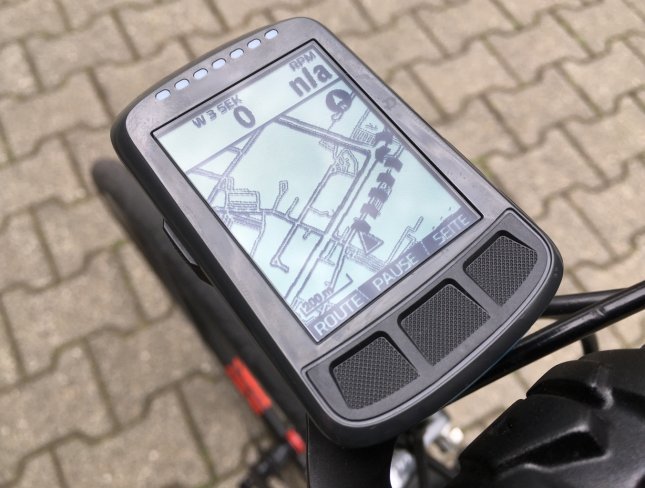
Wahoo Element Bolt
Björn's final verdict
The pre-planned Strava route was easy to follow on the screen and I made it to Maastricht without any problems. I like the fact that the ELEMNT Bolt links with my smartphone. It makes transfer of files easy. The audio signals for turns and when you get off track are very helpful. Unfortunately there is no rerouting or destination setting on the device itself.
Mario and the Sigma Rox 11.0
The Sigma Rox 11.0 bike computer focuses on collecting performance data while riding. Included with the various training functions, is also a track navigation. But how well does a simple track display help you navigate?
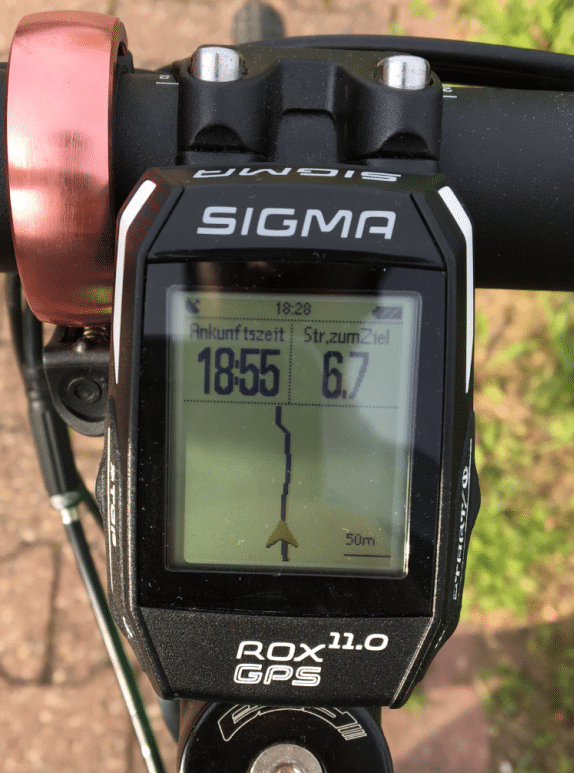
The Sigma Rox 11.0
First, a route has to be planned. To do this, I downloaded the Sigma Data Center program to my computer and connected the Rox 11.0 via USB. The route is then planned on a map either by automatic generation when entering an address or manually setting the route point by point. A combination of both is also possible. I tested the automatic route which also lets you set riding parameters like street, cycling paths or off-road. Afterwards, the route needs to be transferred to the Rox and the riding can begin.
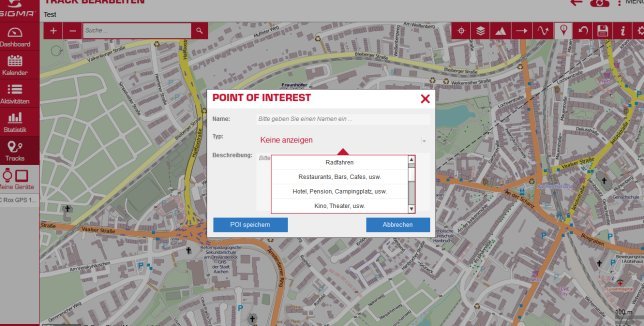
The Sigma Data Center
In the field, the Rox works great. I was sent on gravel and forest paths before reaching Maastricht, which was fun on my Cyclocross bike. However, if I was riding a road bike it may have been a little annoying, so it is important to set the right parameters and check the route via satellite to be sure. While riding, if you get off track, the Rox gives off a warning signal and guides you back to the intended route. And when it’s time to head back, the tracks can also be followed in reverse.
Pros
- Collects a lot of training data
- ANT+, Bluetooth connectivity
- Reliable and direct GPS signal
- Display and rider profile are customisable
- Supported Strava Live Segments
- Buttons are easy to use
- High-quality finish
Cons
- Small two-colour display
- Customisation can take a while
- No maps
Mario's final verdict
Overall, I was really impressed with the Rox 11.0. If you do not need a map, then it really the perfect navigation device that will get you to your destination.
Summing it up
We hope that you have gained an idea of the different cycling navigation options on the market and are now able to make a more educated choice. Of course, the phone-based solution is only for occasional use, but we still think it’s a viable option. The Teasi is great for A to B navigation without further features, while the Wahoo, the Rox and the Garmin are intended for more frequent use, especially if you are looking to include peripheral devices and track your performance.

